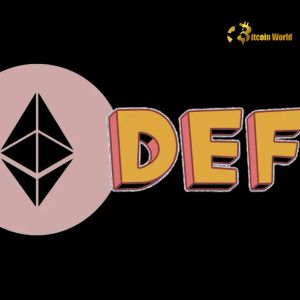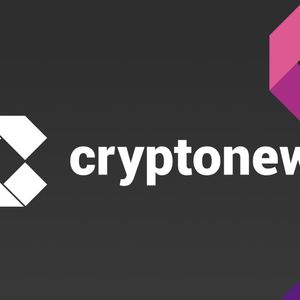Ethereum Upgrade: Unlocking the Future of DeFi
5 min read
BitcoinWorld Ethereum Upgrade: Unlocking the Future of DeFi Have you been navigating the world of decentralized finance (DeFi) on Ethereum? If so, you’re likely familiar with the challenges high gas fees and network congestion can present. But big news is here! A significant Ethereum upgrade has just rolled out, promising to shake things up in a major way. This isn’t just a minor tweak; it’s a development poised to impact everything from simple token swaps to complex DeFi strategies. For years, the Ethereum network has been the backbone of much of the DeFi ecosystem. Its smart contract capabilities enabled groundbreaking applications, but success brought scalability issues. High demand often translated into exorbitant gas fees , making smaller crypto transactions impractical for many users. This latest upgrade aims directly at these pain points, leveraging advancements in blockchain technology to create a more efficient and cost-effective network. What Does This Ethereum Upgrade Actually Do? At its core, this Ethereum upgrade introduces several key changes designed to improve scalability and reduce costs. While the technical details can get quite complex, the main takeaway is the implementation of ‘proto-danksharding’ (specifically, EIP-4844). This might sound technical, but think of it as a way for the network to handle and store data more efficiently. Here’s a simplified look at the core mechanics and benefits: Data Blobs: The upgrade introduces ‘blobs’ of data that can be attached to blocks. These blobs are separate from the main transaction data and are cheaper to process and store temporarily. Reduced Gas Fees: By offloading data into these cheaper blobs, layer-2 solutions (like rollups) can significantly reduce their operational costs. This cost saving is then passed down to the end-users in the form of much lower gas fees for transactions on these layer-2 networks. Increased Throughput Potential: While not full sharding, proto-danksharding lays the groundwork for future scalability improvements, allowing the network to handle a higher volume of data over time. Enhanced Blockchain Technology: This represents a significant evolution in Ethereum’s underlying blockchain technology , moving it closer to its long-term vision of a highly scalable and decentralized network. The primary impact is expected to be felt most strongly by users interacting with layer-2 DeFi protocols . These networks aggregate transactions off-chain and then post bundled data back to Ethereum. With cheaper data blobs, the cost of this bundling process plummets, leading to dramatically lower fees for layer-2 users. How Will This Affect Your Favorite DeFi Protocols? This is where the rubber meets the road for many users. Since a vast majority of popular DeFi protocols were originally built on or have expanded to Ethereum and its layer-2 networks, this upgrade has direct implications for how you use them. Think about activities like: Swapping tokens on decentralized exchanges (DEXs). Providing liquidity to pools. Lending or borrowing assets. Minting or trading NFTs. Interacting with yield farming strategies. For users on layer-2 networks like Optimism, Arbitrum, zkSync, and Polygon zkEVM, the expectation is a noticeable reduction in the cost of performing these crypto transactions . This could make DeFi more accessible, especially for users with smaller amounts of capital, who were previously priced out by high fees on the Ethereum mainnet. While the direct impact on mainnet gas fees might be less immediate or dramatic compared to layer-2s, the overall increased efficiency and reduced congestion could have positive ripple effects across the entire ecosystem. Addressing Gas Fees: Is This the End of High Costs? The perennial problem of high gas fees has been a major hurdle for Ethereum’s mass adoption. This Ethereum upgrade is perhaps the most significant step taken so far to tackle this head-on, particularly for layer-2 users. Let’s be realistic: It might not be the absolute end of variable fees on Ethereum mainnet during peak congestion times. However, by drastically reducing the cost basis for layer-2s, the upgrade incentivizes more activity to move onto these scaling solutions. As more users and protocols migrate or expand to layer-2s, the load on the mainnet decreases, which could indirectly help stabilize or lower mainnet fees over time. The focus on data blobs is a clever way to reduce the most expensive part of layer-2 operations – posting transaction data back to Ethereum. This targeted approach is expected to deliver substantial savings, making frequent interactions with DeFi protocols much more affordable. The Future of Blockchain Technology and Crypto Transactions This Ethereum upgrade isn’t just about lower fees; it’s a crucial step in the evolution of blockchain technology itself. It demonstrates the network’s ability to adapt and implement complex changes to meet the growing demands of the decentralized world. The success of proto-danksharding sets the stage for future scaling upgrades, potentially leading to full sharding down the line. This phased approach allows the ecosystem to gradually adapt while continuously improving performance. Cheaper and faster crypto transactions are vital for the mainstream adoption of web3 applications, and this upgrade is a major catalyst in that direction. As the network becomes more efficient, we could see a new wave of innovation in DeFi protocols and other decentralized applications that were previously constrained by high costs. This could unlock new use cases and bring more users into the ecosystem. Actionable Insights: What Should You Do? So, what does this mean for you as a user or developer in the crypto space? Explore Layer-2s: If you haven’t already, now is an excellent time to start using DeFi protocols on Ethereum layer-2 networks. You’ll likely experience significantly lower gas fees . Stay Informed: Keep an eye on how different protocols and platforms integrate these changes and the resulting fee reductions. Develop on Layer-2: For developers, building on or expanding to layer-2s is becoming even more attractive due to the reduced costs for users. Educate Yourself: Understand that while fees are lower on layer-2s, there are still nuances (like bridging costs and times) to consider. This upgrade is a positive development for the entire Ethereum ecosystem and the broader world of blockchain technology . It addresses a major pain point and paves the way for a more scalable and accessible future for decentralized finance and crypto transactions . Conclusion: A Brighter Future for DeFi? The recent Ethereum upgrade marks a pivotal moment, particularly for the landscape of DeFi protocols . By dramatically reducing the cost of data availability on layer-2 networks, it directly tackles the long-standing issue of high gas fees that have hindered user adoption and activity. This advancement in blockchain technology promises to make crypto transactions more affordable and accessible for millions, potentially unleashing a new era of innovation and participation in decentralized finance. While challenges remain, this upgrade is a powerful step towards realizing Ethereum’s vision of a scalable, decentralized, and truly global computer. To learn more about the latest Ethereum upgrade trends, explore our article on key developments shaping Ethereum price action. This post Ethereum Upgrade: Unlocking the Future of DeFi first appeared on BitcoinWorld and is written by Editorial Team

Source: Bitcoin World



